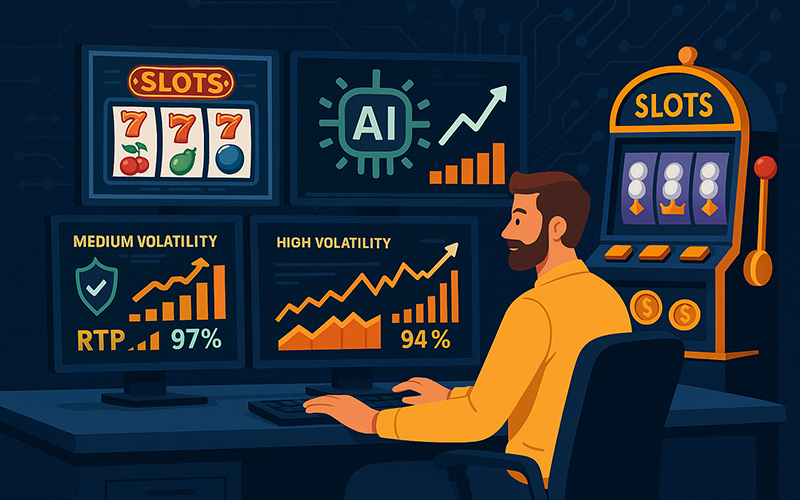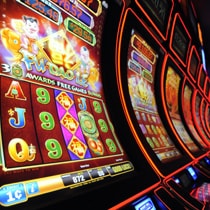Live Casino & Artificial Intelligence: How the Two Create a Powerful Unity
AI is everywhere, but the gambling sphere has its own rules. In the live sector, trust rests on people-dealers, physical equipment, and a studio that looks and feels authentic. Players choose real tables for human contact and visible fairness.
At the same time, purely physical setups are costly, slow to modify, and hard to scale. They also limit how far studios can push new formats. AI changes the equation, especially when paired with green screens and real-time compositing. However, even here, there are many nuances.
Where “Real” Ends and “Digital” Begins

Live casinos rely on visible reality. Players want to see the table, the dealer, and the result as it happens. Digital layers help only when they clarify the action. When they steal attention, the stream feels less credible. The boundary is to keep the physical game at the centre and let technology stay in the background.
The overuse of visual effects turns a game into a showcase of graphics. Mismatched themes create cognitive friction and reduce trust. Busy interfaces force constant eye shifts between wheel, dealer, and HUD. The result is fatigue and weaker engagement over time.
Typical errors to avoid:
- cartoonish or surreal backdrops around a physical table;
- flashing panels that compete with the wheel or cards;
- multiplier or side-bet info scattered across several UI zones;
- effects that cover the dealer’s gestures or obscure outcomes.
Players stay when they can follow the sequence of events without effort. They expect a clean view of the wheel or shoe, natural dealer presence, and a UI that supports. Enhancements should track the physical object and appear anchored to it.
The Design Philosophy
AI should serve the table. The aim is to make the live game easier to read and more engaging without changing what feels real. Developers should keep attention on the dealer and the physical object, while digital elements must guide the eye and reduce effort.
Enhancement centralises focus instead of splitting it. Information appears where the action is, so players follow the flow without scanning multiple zones. Subtle, context-aware overlays help comprehension and preserve the live look.
Practical patterns:
- on-object highlights that track the wheel or cards;
- minimal overlays for multipliers or results where eyes already rest;
- clean compositions that avoid covering dealer gestures.
Investments must show value. Features that clarify the action and reduce noise support longer, smoother sessions. Operations benefit when tools are stable and easy to run in real time.
V-Track Idea and the UX Shift
Multiplier roulettes are popular, but the interface often splits attention. Players watch the wheel, the dealer, and several UI zones to see which numbers carry the boosters. The concept behind V-Track Roulette is to bring that information back to the wheel. Multipliers appear on the physical object, so focus remains where the action happens.
Real-time computer vision recognises roulette numbers as the wheel spins. Low-latency compositing aligns overlays precisely on the wheel using Vindral Live and Vindral Composer.
V-Track Roulette launched in summer 2024 and has run continuously without glitches. For operators, it refreshes a proven format without changes to the core mechanics. For players, it enhances immersion and clarity by preserving the sense of an authentic, physical game.
The application of precise tracking shows the unlock variation and keeps the live feel. The system recognises segments and movement, so overlays read as part of the wheel rather than as detached UI. This keeps attention on the physical object as it adds room for format changes.
Studios can differentiate formats without rebuilding wheels, iterate faster, and support multiple brands from a single setup. The approach extends the roulette logic to a larger canvas and provides operators with creative flexibility, as it retains the appearance and rhythm
AI for Audio Quality
Visuals get the spotlight, but sound defines immersion. Crystal Speech removes unwanted noise (from air conditioning to shufflers and chatter), so streams feel tighter and easier to follow.
Studio-level effects:
- Tables can sit closer together, with less acoustic insulation required.
- Construction costs drop while room layouts become simpler.
- The same studio footprint supports more simultaneous games.
Cleaner audio keeps attention on the dealer’s voice and the game’s rhythm. With less hiss and background clutter, sessions feel calmer and more consistent, which supports long, comfortable play without breaking the live atmosphere.
The Right AI Projects

Not every impressive demo deserves a place in a studio. A feature should make games easier to follow, help teams run shows with fewer hurdles, or deliver both. If it adds visual clutter or hides the table, it works against the core appeal of live content.
V-Track Roulette centralises attention on the wheel instead of scattering it across panels. Crystal Speech reduces ambient noise, so dealers are heard without strain. In both cases, the live contract remains intact, and operations become simpler rather than heavier.
Two directions stand out without changing what “live” means:
- Wheel-show flexibility. Developers get to vary segments, symbols, and pacing, all while keeping the physical object in view. This approach preserves the live read as it also adds room for format refreshes and seasonal shifts.
- AI for game integrity and support (GIR). Developers get to automate routine checks, surface signals faster, and help first-line teams respond with context. The aim is reliability, less manual overhead, cleaner audit trails, and quicker resolutions.
A durable AI feature enhances clarity, keeps production stable, and integrates seamlessly into the table rather than serving as decoration. Players should feel closer to the action, not pulled into a separate interface. Dealers should run the show naturally, without extra choreography or troubleshooting.
Evidence matters more than novelty. Features that stay in production with minimal friction, hold attention over time, and travel well across setups earn roadmap space. Those that look striking, but fragmented focus, should be avoided.
Checklist for potential integration:
- Reality stays visible and central at all times.
- Clarity improves on the physical object, not in the side panels.
- Rollout is stable in live conditions with low overhead.
- Data confirms sustained gains, not short spikes.
- Dealers operate it smoothly within normal routines.
The Main Things about AI in Live Casino
Artificial intelligence belongs where it sharpens what real-dealer entertainment already does well. The strongest use cases guide attention back to the table, compress production friction, and keep the stream readable over time.
Key aspects to remember about AI in real-dealer casinos:
- Enhancement over replacement is the right design principle.
- V-Track Roulette centralises focus with multipliers on the wheel.
- Money-wheel tracking enables flexible formats without new hardware.
- AI audio cleanup improves immersion and reduces studio build complexity.
- GIR and support are practical next steps for measurable operational gains.
Check the information used to contact us carefully. It is necessary for your safety.
Fraudsters can use contacts that look like ours to scam customers. Therefore, we ask you to enter only the addresses that are indicated on our official website.
Be careful! Our team is not responsible for the activities of persons using similar contact details.



